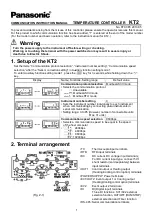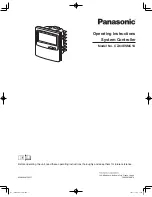
STAND: 17.06.2019
9910_Operation_Manual_STANDCONTROL_C1_Rev1v1_EN
Seite 22 von 41
2. Press both the arrow keys ( and ) at the same time.
3. The controller confirms with one “click-clack” sound. (The absence of this signal means that
setting is possibly not permitted.)
To delete the container stop, proceed as follows:
1. Keep the arrow key down pressed.
2. The table stops automatically upon reaching the container stop.
3. Press both the arrow keys ( and ) at the same time.
4. The controller confirms with a single “click-clack” sound.
Follow a similar procedure for deleting the shelf-stop.
1. Keep the arrow key up pressed.
2. Steps 2 to 4 are identical to those for deleting the container stop.
If an attempt is made to set the container stop or shelf stop too close to the middle, the controller
signals this with 6 “click-clack” sounds.
With a comfort hand switch, you have the option of setting and deleting the container stop and the
shelf stop from the menu. Instructions for doing so are given in sections 10.1.7 and 10.1.8.
Warning:
With an initialisation movement prompted by the controller, the reset
position is always approached directly. Any container stop or safety stop that is
present is ignored.
First, remove all hindrances below the table (for example, Rollcontainer) and
pay heed to the increased risk of injury.
9.3 Collision detection
Warning:
Collision detection is a feature for system protection.
When the desktop is being moved, there is a danger of crushing.
Note:
Remove the hindrance after a collision.
Every controller has a simple internal collision detection. This can be supplemented with the more
sensitive external sensor STAND.GUARD G1 (see section 10.2).
Collision detection is triggered when the desktop hits a rigid hindrance. This works both upward and
downward. Owing to the physical properties of the desk (desk base and desktop), the collision
detection reacts with a different degree of sensitivity upon hitting hindrances at different places of the
desktop. Even with different loads and load distributions on the table, the collision detection reacts
with different degrees of sensitivity.
If the collision protection detects a collision, the controller stops the current movement and moves
about 25 mm in the opposite direction. This is intended to prevent distortion and a slanted position
of the table.
Remove the hindrance before the next movement.
After the collision and removal of the hindrance, the controller is ready for operation again immediately.
















































